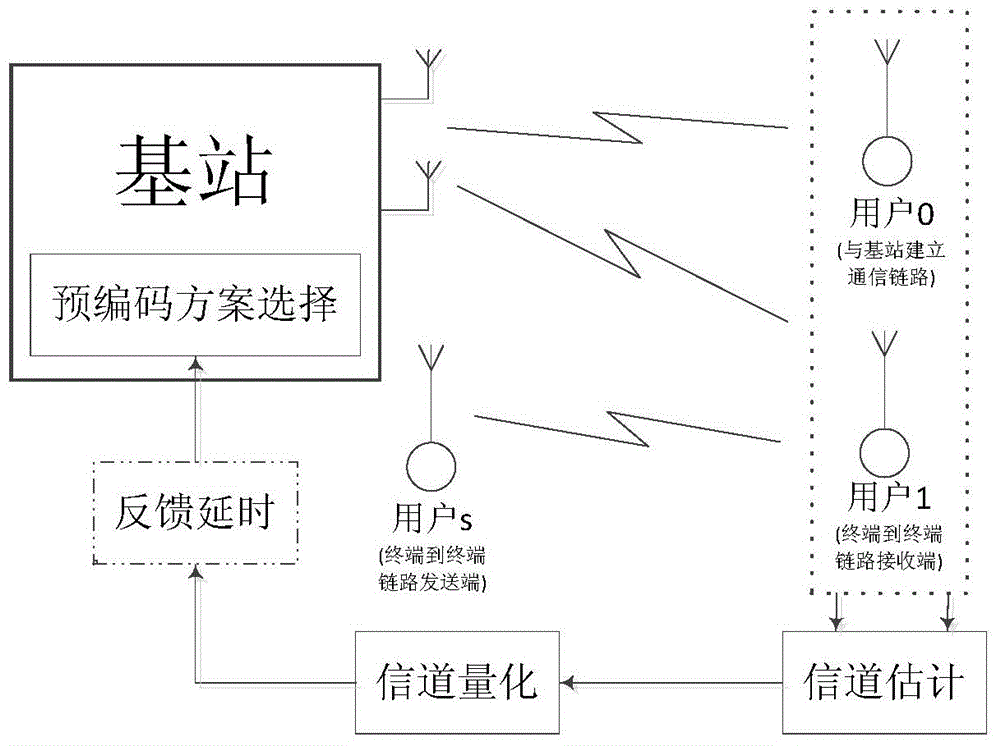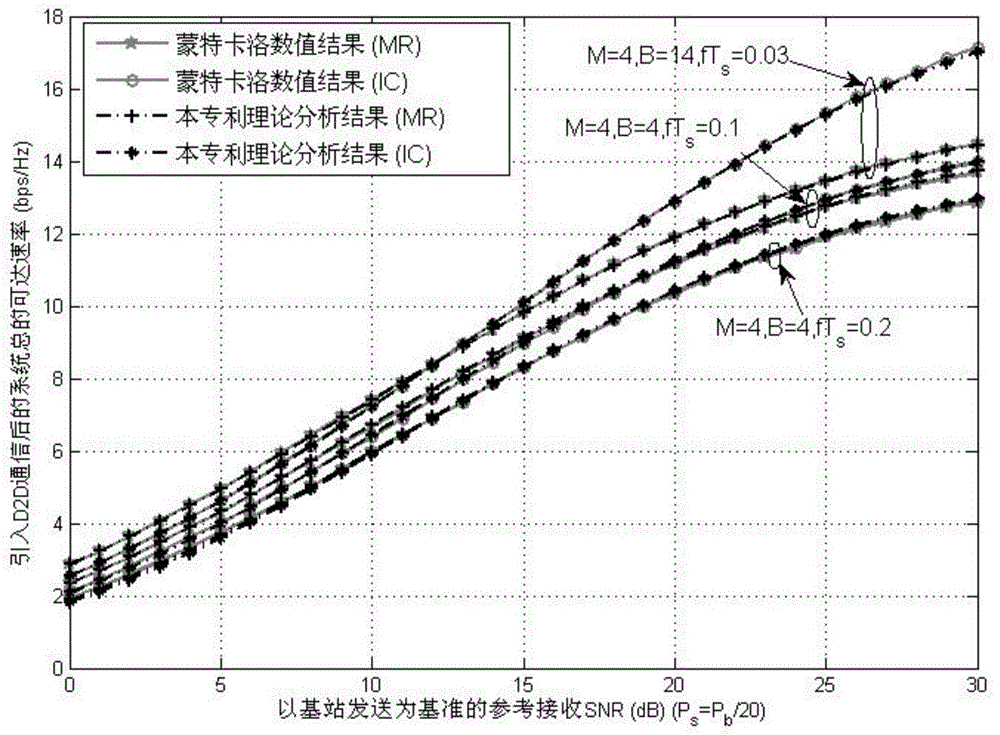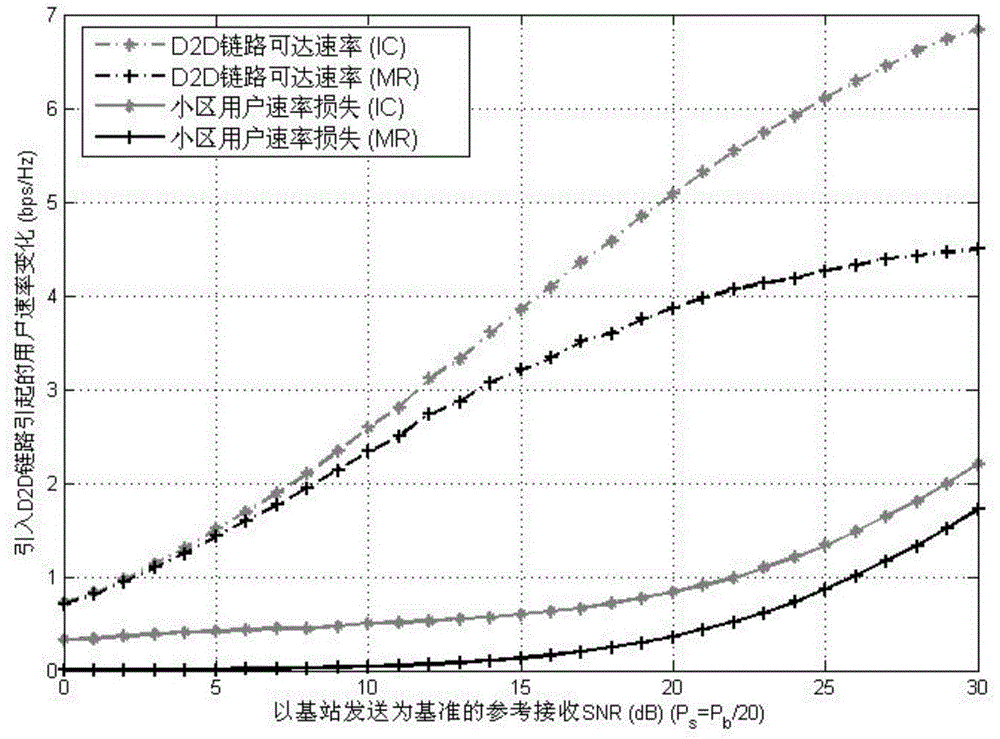Self-adaptation cooperative transmission method in cellular mobile communication D2D system
A technology of cellular mobile communication and cooperative transmission, applied in the field of cooperative transmission, can solve the problems of performance degradation, information delay, system channel information and real channel information quantization error, etc.
- Summary
- Abstract
- Description
- Claims
- Application Information
AI Technical Summary
Problems solved by technology
Method used
Image
Examples
Embodiment Construction
[0053] The present invention will be further described below in conjunction with the accompanying drawings. Such as figure 1 As shown, an adaptive cooperative transmission method based on delay feedback in the cellular mobile communication system supporting device-to-device communication of the present invention is implemented in the following steps:
[0054] (1) The system surveys the average moving speed of user terminals in the cell to calculate the Doppler frequency offset, and then calculates the channel delay correlation coefficient according to the Clarke scattering model.
[0055] Doppler frequency offset f of cell user 0 communicating with the base station 0 =f c v 0 / c, the channel delay correlation coefficient is ρ 0 =J 0 (2πf 0 T s ), the Doppler frequency offset f of user 1 at the receiving end of the device-to-device communication link 1 =f c v 1 / c, the channel delay correlation coefficient is ρ 1 =J 0 (2πf 1 T s ), where c represents the speed of ...
PUM
 Login to View More
Login to View More Abstract
Description
Claims
Application Information
 Login to View More
Login to View More - R&D
- Intellectual Property
- Life Sciences
- Materials
- Tech Scout
- Unparalleled Data Quality
- Higher Quality Content
- 60% Fewer Hallucinations
Browse by: Latest US Patents, China's latest patents, Technical Efficacy Thesaurus, Application Domain, Technology Topic, Popular Technical Reports.
© 2025 PatSnap. All rights reserved.Legal|Privacy policy|Modern Slavery Act Transparency Statement|Sitemap|About US| Contact US: help@patsnap.com



